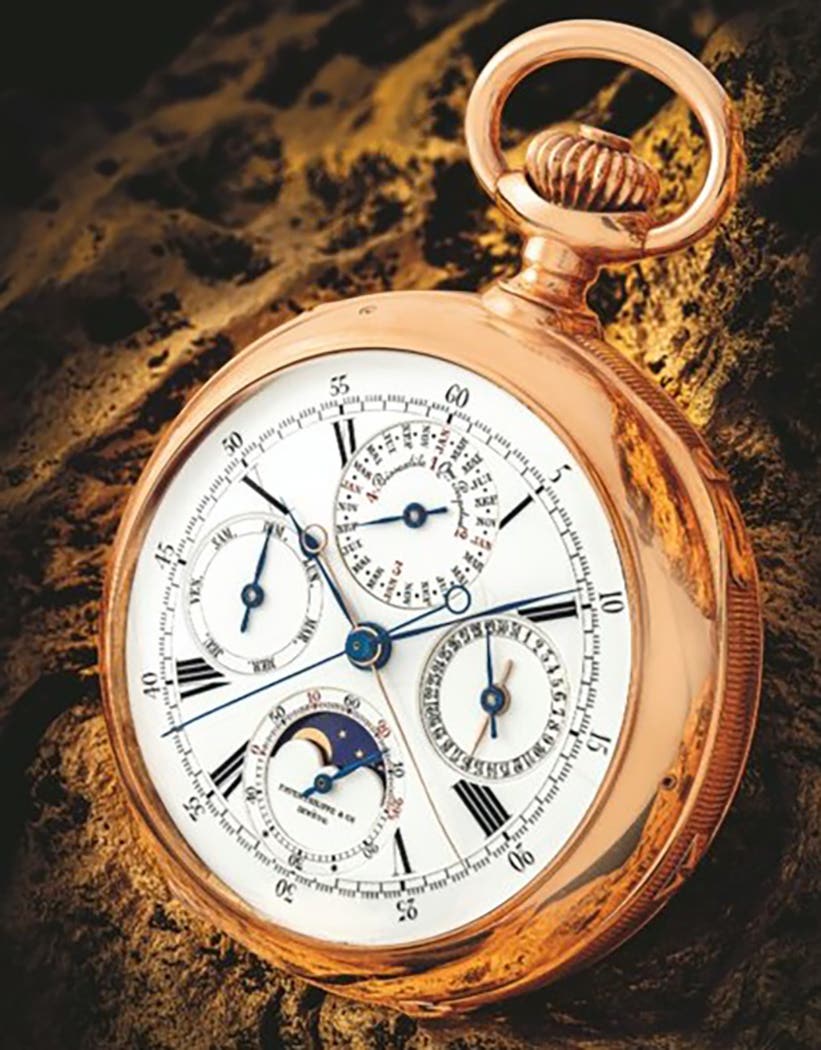Using Hallmarks to Determine the Value of Victorian Jewelry
Examining the history behind Victorian jewelry, including the evolution of design, materials, and how to use hallmarks to determine the age and value of pieces.
Collecting Victorian jewelry can be fun and frustrating, especially for the novice collector. The fun part is obvious – what woman doesn’t want a new bauble? The frustrating part stems from several factors, beginning with missing hallmarks on most American-made items, which is typical of the Victorian era. Hallmarks provide collectors with a myriad of information, such as what type of metal was used to make the item, plus when and where it was made. Things get even more confusing because stones may be genuine, a doublet, synthetic or a spinel. A brief history lesson is in order before delving into these points in more detail.
A Brief History of Victorian Jewelry
Items made from 1837 until 1901 are considered “Victorian” because these are the years Queen Victoria reigned. Because this spans more than six decades, antique jewelry collectors break the Victorian era down into three distinct time periods. The early portion is known as the Romantic period and dates from 1837 until 1860. The Grand period, with the styles and accessories most associated with Queen Victoria, begins in 1861 (the start of our Civil War) and lasts until 1880. The final years are the Aesthetic period and cover 1881 until Victoria’s death in 1901.
Because fashions did not change as rapidly as today, it is common to find a piece of jewelry dated or hallmarked from the Grand period but resembling the earlier Romantic era, blurring or blending the two styles. Here’s where some of the frustration of collecting kicks in – how to date a piece that lacks a hallmark and looks like it could be from two different eras?
What Are Hallmarks?
Hallmarks are tiny markings placed on jewelry by the maker. They contain a wealth of information such as who made the item (known as the maker’s mark), what year it was assayed (or taxed), thus providing the item’s approximate age, and the metal used, such as 18 or 22 karat gold. Not until after 1854 did the United Kingdom create gold hallmarks for the lower gold content more commonly used today such as 9 karat, 12 karat and 15 karat. This change in gold content coincides with the Industrial Revolution and the rise of the middle class.
Hallmarks became a mainstay for British pieces, but American jewelers were not required to hallmark their items. One mistaken assumption about hallmarks is that the British government required jewelers to hallmark their pieces to prove the taxes had been paid on the material, primarily gold and silver. It wasn’t the Crown who required these hallmarks, but the Guilds.
Victorian-Era Guilds
Think of a Guild as an early version of the trade union. These organizations provided helpful services to the consumer, such as standardizing the gold content of pieces. When an item was stamped 18 karat gold for example, it contained 750 parts gold (or 75 percent gold) versus the lesser 14 karat which is only 58 percent gold. This protected the public from unscrupulous tradesmen while holding the jewelers accountable for their hallmarks. Hallmarks always included the maker’s mark, telling the Guilds as well as the consumer who made the piece.
Guilds also created the formal position of “apprentice,” providing quality training for the next generation of craftsmen. By limiting the number of apprentices in training, this ensured enough work for future jewelers. To be apprenticed into any Guild was an honorable and noteworthy career move, guaranteeing the family a prosperous future.
Maker's Marks
During the Victorian era in Great Britain, it was considered “unseemly” for a jeweler to advertise his merchandise. His “maker’s mark” portion of the hallmark became extremely important because it was how consumers identified his work. Jewelers often displayed their “mark” in their shop window making it easier for clients to locate them.
Hallmarks are found in discreet places on jewelry, such as inside a ring’s band or on the pin portion of a brooch. These areas tend to wear first however, sometimes rendering the hallmarks illegible and adding to the collector’s woes.
To further compound this problem, American made jewelry rarely had a hallmark of any kind before 1900, and when an item was hallmarked it was usually only for the gold content. Makers’ marks were rare because advertising was perfectly acceptable in the United States. Peruse any old newspaper or magazine from the Victorian era and find dozens of ads hawking merchandise. One of the most famous craftsmen to “hallmark” his work was Tiffany, who made it fashionable to sign items, beginning with his stained glass lamps. Signing his jewelry came later.
Cost-Saving Measures
Since most of the Victorian era coincided with the Industrial Revolution, a new generation of consumers — “the middle class” — was born. This “class” consisted of successful merchants, tradesmen, lawyers, doctors and executives who managed the factories. Because Americans eschewed the strict codes of propriety prevalent in Europe, money and all its trappings created a new kind of aristocracy in the United States.
The pockets of the American middle class weren’t quite as deep as their British aristocratic cousins, however, so a market for goods that were similar to the finer European items, but not quite as expensive, was born.
Gold
Smart tradesmen picked up on this trend and fashioned jewelry from 9-, 10- and 12-karat gold versus the more expensive 18 and 22 karat. The market for gold-plated pieces, known as rolled gold, also grew. Rolled gold can be so heavily plated that it may test positive as 9 karat or 37.5 percent gold, so collectors must tread carefully.
Vermeil
Another less costly jewelry material was vermeil, which utilized a thin gold plate over sterling silver. Though vermeil has existed for centuries, it was mainly used by royal families because the base is sterling silver — still a precious metal. During the Industrial Revolution, many American-made items were fashioned in vermeil. When the light gold plating wore off, the owner still had an attractive silver piece.
Washes
To stretch the dollar even further, jewelers often brushed or “washed” a thin layer of gold over a cheaper base metal, usually brass. This wash soon wore off, however. Pieces made of brass with a gold wash were very common during the Romantic and Aesthetic periods and helps today’s collector date a piece. Note that there never was a hallmark created for rolled gold and gold washed items. Vermeil pieces would bear the sterling mark. American jewelers rarely made vermeil pieces of jewelry, preferring to sell the cheaper rolled gold and gold washed items instead.
Semi-Precious Stones
Besides the confusion over metals, semi-precious stones made their way into pieces in lieu of their higher priced counterparts such as diamonds, rubies and emeralds. White topaz or rock crystals frequently substituted for diamonds while bohemian garnets doubled as rubies, green garnets as emeralds and so on. Green garnets come from two very different minerals, the tsavorite and demantoid. Tsavorites are a lighter green and less expensive than the rare demantoid garnet with its dark green color. Demantoid garnets were used sparingly in jewelry during the Victorian era. Though dear, they were still friendlier on the wallet than a genuine emerald.
Doublets
Jewelers also utilized doublets in lieu of large, expensive stones. Though doublets have been around since the 18th century, their use increased dramatically during the Victorian era. Doublets are “stones” that have a thin sliver or layer of the precious stone on top which is then fused or glued to a larger piece of colored glass or a semi-precious stone below, simulating something much more expensive at a fraction of the price.
To the trained eye, the fused or glued seams of the doublet stones are easily discernible. Knowing this, jewelers rarely mounted a doublet in the high claw setting so popular during the Aesthetic period. Instead, doublets were usually set into the metal, much like the bezel or invisible settings of today.
Synthetic Stones
Synthetic stones have been around since the 1700s, but required special skills to manufacturer that many jewelers refused to learn. But when the affluent middle class started scoffing up these affordable lookalikes, jewelers soon learned the rudiments of creating synthetics, especially for sapphires. There was no good substitute for the deep blue of the sapphire except glass, which rarely fooled anyone.
Spinels
Besides synthetics, spinels often substituted for rubies. Spinels were mined in British-occupied Burma and Sri Lanka at the time and were often referred to as “balas rubies.” This name was intentionally meant to fool the unsuspecting consumer. In 1830, the Guilds stepped in and developed the technology that allowed gemologists to distinguish rubies and spinels as separate minerals. But education and training was slow to travel across the great pond during the early 1800s, so many spinels were sold as rubies during the Victorian era, especially in the United States.
So how does someone start a Victorian jewelry collection, especially with no hallmarks? The best teacher of early American made jewelry is experience. Pick the brains of the dealer who owns the item and buy some good reference books with extensive photographs. Begin a collection with only hallmarked pieces. They may cost more up front, but save hundreds — if not thousands — of dollars in the end.
Editor's Recommendation: Warman's Jewelry, 5th Ed.
If you enjoy what you've gleaned here from Melanie Thomas, an exceptional reference to add to your library is Warman's Jewelry, 5th Ed. Based on the authoritative and comprehensive work of the late Christie Romero, this book is a timeless guide to the world of jewelry. Inside this edition you'll find:
- More than 1,000 pieces of antique, period, and vintage collectible jewelry on the U.S. market today
- Informative and valuable background information about everything from Victorian, Art Noveau, Edwardian, Costume, Bakelite jewelry, and more
- Detailed descriptions and up-to-date pricing information








